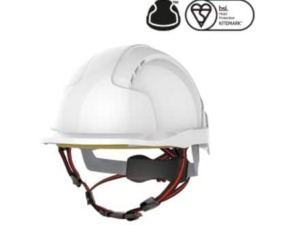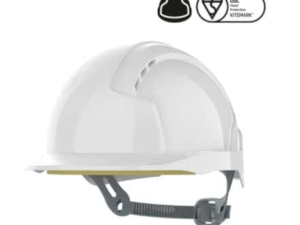Bump Caps vs Hard Hats: Which One is Right for You?
Selecting the proper safety gear for your workers is something you need to get right and head protection is one of the most critical choices you will need to make. PPE is essential, but choosing between bump caps and hard hats can be challenging based on your industry and your workers' tasks.
Every year thousands of workers suffer fatal injuries at work, and many could have been prevented or the impact lessened if the correct PPE had been used.
The 20/21 HSE data showed 61,000 non-fatal injuries in the construction industry, 25% of which caused 7-day absences. On average, 27 in every 1000 workers on a construction site will sustain a work-related injury. And while that is not the only industry that requires a hard hat or a bump cap, your workers must have access to the right PPE - it could be lifesaving.
Each type of PPE offers a different level of protection and is designed for different purposes; when it comes to bump caps vs. hard hats, what is your best option?
Key Points
What is a Bump Cap?
Bump caps, otherwise known as a bump hat are lightweight safety hats that look like baseball caps, and offer in-built impact resistance. They have foam inserts for comfort, as well as vents to provide breathability as well as protection. Bump caps have a close-fitting design and are adjustable, meaning they can be secured tightly to the wearer.
Unlike some other head protection styles, bump caps do not have chin straps, but they will remain in place due to their design. Making bump caps an excellent choice for workers who might not always be upright.
What are Hard Hats?
Hard hats are considered one of the best forms of protection for the head in high-impact collisions. A hard hat design means any impact from falling debris is spread across the head rather than a single point of impact. What this means is that the impact isn't transferred to the skull.
A hard hat is usually made of strong, rigid plastic covering a metal shell. Inside a hard hat sits a suspension frame that keeps space between the skull and the hard hat. The rigid plastic is usually made up of ABS or HDPE polymers, although there are some that are made from metal and fibreglass.
Hard hats are mandatory on building sites as they are heat, object, and penetration resistant.
What are Bump Caps Used For?
A bump cap is designed to prevent bumps to the head. For example, where there are low-hanging items, low ceilings, or anything you might bump your head on. Anyone undertaking tasks in a work environment where a bump to the head might be a risk factor.
While bump caps can prevent most minor bumps, a bump cap is not the best option if there is a risk of heavy debris falling from a height. A bump cap or hard cap, as they may be called, is designed to protect against incidents that involve a stationary object.
When should you use Bump Caps?
Bump caps can protect against cuts or scratches from sharp edges or low-hanging objects with which your head may come into contact. A bump cap protects against mild concussions, bumps, scrapes, and cuts
Bump caps are ideal for the following roles:
- Food processing
- Plumbers
- Mechanics
- Electricians
- Baggage handling
- Manufacturer and assembly line workers
How can you choose the right bump cap?
To make sure that bump camp is comfortable, opt for one with vents and foam padding. Look for bump caps that meet the European standard; you can check for that by looking for the code EN 812
What are Hard Hats Used for?
Hard hats, also known as safety helmets, prevent head and brain injuries. A hard hat offers protection against falling debris and objects, rain, electric shocks, and impact with other objects.
The construction industry was ranked as the third most dangerous industry, with many of the fatalities being caused by moving or falling objects, being hit by a moving vehicle, and falling from a height.
When should you use hard hats?
While bump caps are used for more minor risks to the head, a hard hat is required as part of the Personal Protective Equipment Regulations 1992. It states that every employer should provide workers with a hard hat and ensure that it is worn on sites with a risk of head injury.
Hard hats are designed to protect the wearer from a vast range of hazards typically associated with work sites. This includes objects that could swing, fall, be thrown, or may strike a worker.
Hard hats can save workers from life-altering or fatal incidents while working on site.
What roles would typically require a hard hat?
- Gas and oil rig engineers
- Road workers and road maintenance
- Working from a height like scaffolding
- Constructions roles
- Tree surgeons and tree felling roles
How can you choose the right hard hat?
Any hard hats you purchase for your workers should have gone through rigorous testing - so you know that they are manufacturers of the BS EN 397 standard. All hard hats used on construction sites are legally required in the UK to comply with this code.
The colour of the hard hat can also help distinguish between different roles on the work sites.
● Yellow hard hats cover various roles
● Blue hard hats are used for visitors.
● Orange is used for signallers.
● White is usually for site managers.
● Black is for supervisor roles.
Although these may vary based on the industry in which they are being used.
Should you choose bump caps or hard hats?
With distinct characteristics of each option, it is crucial to consider the legal requirements and the work that your team will undertake. Hard hats are legally required on construction sites, while bump caps offer a good level of protection for minor jobs with less risk.
A good thing to remember is that if the work has a high risk of impact, it is better to opt for a hard hat. A bump cap is your best option if there is a reduced or zero chance of impact.
Why Wait? Check Out Our Full Head Protection Range of Products Today By…
…clicking here, or by contacting a member of our highly-experienced team today on +44(0)121 544 5208 or by sending an email to sales@provincialsafety.co.uk. The entire Provincial Safety team look forward to hearing from you.




